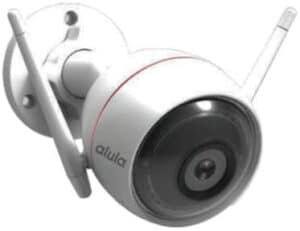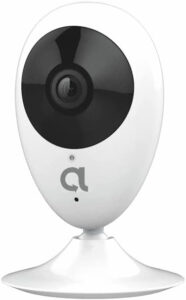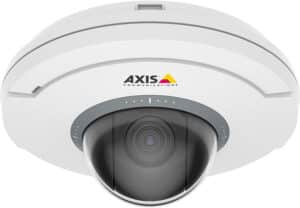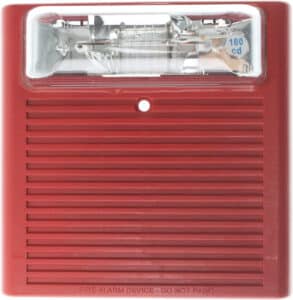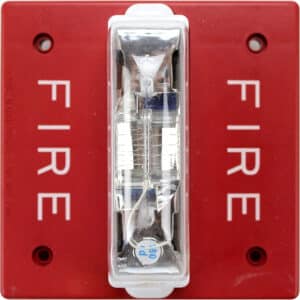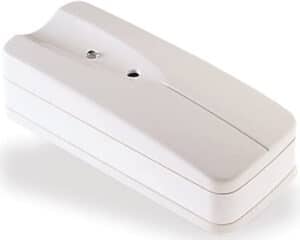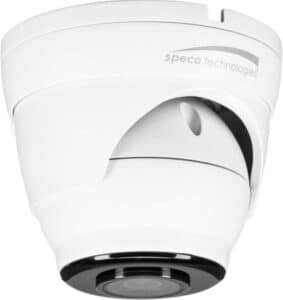Essential DIY Home Security Tips and Tricks for Security System Installation
The feeling of safety and security in your own home is priceless. Installing a reliable security system is the ultimate step to keep your family and personal belongings guarded round the clock. While professional systems can be expensive to set up and maintain in the long run, DIY home security ideas allow you the freedom to customize, modernize and improvise your security measures without breaking the bank.
In this article, we will share essential diy home security tips and tricks to help you design, implement and maintain a foolproof DIY home security system that works for you. From installing glass break sensors to securing your spare keys, we’ll provide all the inside track for a comprehensive security setup that will have you sleeping soundly at night. Keep reading to discover how you can make your home burglar-proof with these DIY home security ideas.
Table of Contents
The Benefits and Drawbacks of DIY Home Security Systems: Is it Worth the Effort?
As a homeowner, one of my top priorities is ensuring the safety and security of my property and loved ones. Over the years, I’ve come to realize that DIY home security tips can be a cost-effective and efficient way to protect my home. In this section, I will discuss the benefits and drawbacks of DIY home security systems, and help you determine if it’s worth the effort for your situation.
One benefit of DIY home security systems is the cost savings. Professional security system installation and monitoring can be expensive, but DIY options can provide similar protection at a fraction of the cost. Additionally, DIY security systems allow customization, meaning you can choose the specific components that suit your security needs and preferences.
On the other hand, DIY home security systems do have some drawbacks. One potential downside is the lack of professional monitoring. While many DIY systems offer self-monitoring options, you will need to be vigilant in monitoring your system and contacting the authorities in the event of a security breach. Another drawback is the installation process, which can be time-consuming and may require some technical know-how.
Do-it-yourself (DIY) home security systems have numerous benefits that far outweigh any potential drawbacks, but they require your dedication to installation and maintenance to ensure optimal results. Invest your time and effort in a DIY security system to enjoy the peace of mind that comes with knowing your home is secure.
Protecting Your Property: Installing Sliding Door Locks and Glass Break Sensors
Sliding doors can be an attractive entry point for burglars, as they are often less secure than traditional doors. In this section, I will provide some DIY home security tips for protecting your property by installing sliding door locks and glass break sensors.
Firstly, it’s crucial to ensure that your sliding doors are equipped with proper locks. There are several types of sliding door locks available, including barrel locks, foot locks, and double-bolt locks. Each type offers varying levels of security, so research and choose the best option for your specific sliding door.
In addition to locks, glass break sensors are another essential component for securing sliding doors. These sensors detect the sound of breaking glass and trigger an alarm, alerting you to a potential break-in. When installing glass break sensors, it’s important to place them in close proximity to your sliding doors and test them regularly to ensure they’re functioning correctly.
Don’t let burglars make an easy entry through your sliding doors! Invest in premium locks and glass break sensors today to keep your property safe and secure. It’s a small price to pay for peace of mind and protection against break-ins.
The Importance of Lock Boxes and Secure Spare Keys for DIY Home Security
Spare keys can be a lifesaver in the event of a lockout, but they can also pose a security risk if not stored properly. In this section, I will discuss the importance of lock boxes and secure spare keys for DIY home security.
A lock box is a small, secure container designed to store spare keys safely. They are typically made of durable materials like metal or heavy-duty plastic and can be locked with a combination or key. Lock boxes can be mounted to a wall, door, or other secure locations, keeping your spare keys out of sight and safe from potential burglars.
When it comes to spare keys, it’s essential to be cautious about who has access to them. Only trusted family members or friends should be given a spare key, and it’s crucial to keep track of who has a copy. If a key is lost or stolen, it’s best to change your locks as soon as possible to maintain your home’s security.
Don’t leave your keys vulnerable to thieves! Keep them safe by using lock boxes and implementing smart spare key protocols to protect your home from potential burglary.
Burglar-Proofing Your Front Door: Tips and Tricks for Reinforcement and Security Cameras
Your front door is your home’s first line of defense against burglars, so it’s essential to take steps to burglar-proof it. In this section, I will share some DIY home security tips for reinforcing your front door and using security cameras to enhance your home’s security.
One effective way to reinforce your front door is by installing a deadbolt lock. Deadbolts provide an additional level of security by making it more difficult for burglars to force their way in. When choosing a deadbolt, opt for a high-quality, ANSI Grade 1 rated lock for maximum protection.
Another way to strengthen your front door is by installing a door reinforcement plate, which is a metal plate that attaches to the door frame to help prevent forced entry. Additionally, consider upgrading your door’s hinges and strike plate for added security.
Security cameras are another valuable tool for front door security. By installing a security camera near your front door, you can monitor who approaches your home and have video evidence in the event of a break-in. When selecting a security camera, look for features like night vision, motion detection, and remote access for optimal protection.
DIY Home Security Camera Installation Guide: Tips for Hiding and Proper Viewing Alignment
Installing home security cameras can be a valuable addition to your DIY home security system. In this section, I will provide tips for hiding your security cameras and ensuring proper viewing alignment for optimal surveillance coverage.
When hiding your security cameras, the goal is to make them as inconspicuous as possible. Some effective hiding spots include placing the camera within a birdhouse or outdoor light fixture, mounting the camera high up on a wall or roofline, or concealing the camera within foliage or landscaping. Remember to consider the camera’s viewing angle and field of view when choosing a hiding spot to ensure adequate coverage.
Proper viewing alignment is crucial for capturing clear footage of potential security breaches. When positioning your security cameras, consider the following tips:
- Mount the camera at a downward angle to minimize glare and capture a larger field of view.
- Ensure the camera is positioned to capture key entry points, such as doors and windows.
- Test the camera’s video quality and adjust the positioning as needed for optimal clarity.
With strategic placement and inconspicuous positioning of your security cameras, you can successfully safeguard your premises from potential break-ins while simultaneously discouraging thieves from even attempting to trespass.
A Few Smart Lightbulbs Can Go a Long Way: Using Lighting for Home Security
Lighting can play a significant role in home security, as well-lit areas tend to deter potential burglars. In this section, I will discuss how to use smart lightbulbs and strategic lighting to enhance your DIY home security system.
Smart lightbulbs are a convenient and efficient way to control your home’s lighting remotely. With features like programmable schedules, remote access, and compatibility with smart home systems, smart lightbulbs can help create the illusion that someone is home even when you’re away.
In addition to smart lightbulbs, strategic placement of outdoor lighting can enhance your home’s security. Consider installing motion-activated floodlights in key areas, such as near entry points, walkways, and dark corners of your property. These lights will illuminate when motion is detected, potentially deterring burglars and alerting you to their presence.
Why Unlocked Doors are Inviting for Burglars: Tips for Maintaining and Locking Windows and Doors
Unlocked doors and windows can be an open invitation for burglars, making it essential to maintain and secure these entry points. In this section, I will offer tips for maintaining and locking your windows and doors to enhance your DIY home security system.
First and foremost, it’s crucial to develop a habit of locking all doors and windows, even when you’re at home. This simple act can significantly reduce the likelihood of a break-in. Additionally, consider upgrading your locks to high-quality, ANSI-rated models for added security.
Routine maintenance is also essential for ensuring your doors and windows remain secure. Inspect your doors and windows regularly for signs of wear, such as loose hinges, worn weatherstripping, or damaged frames. Address any issues promptly to maintain the integrity of your entry points.
Lastly, consider adding secondary security measures, such as window bars, security film, or additional locks, to further safeguard your home.
The Power of Alarm Systems: How to Install and Utilize an Alarm System for Maximum Security
Alarm systems can be a valuable component of any DIY home security system, as they provide an audible alert in the event of a security breach. In this section, I will discuss how to install and utilize an alarm system for maximum security.
When selecting an alarm system, consider factors such as the size of your property, the number of entry points, and your specific security needs. Many DIY alarm systems are wireless and easy to install, with components such as door and window sensors, motion detectors, and control panels.
To install your alarm system, follow the manufacturer’s instructions closely, ensuring that all sensors are placed in the appropriate locations and that the control panel is easily accessible. Test the system regularly to ensure it’s functioning correctly.
Don’t settle for a basic alarm system that only provides minimal protection. Elevate your home security to the next level by incorporating advanced features like security cameras, smart home integration, and professional monitoring services. With these enhancements, you’ll have peace of mind knowing that your home is fully protected against threats at all times. Don’t wait until it’s too late – upgrade your alarm system and safeguard your home and loved ones today.
How to Install and Utilize a Garage Door Opener for Improved Home Security
A garage door opener can be an effective way to improve your home’s security, as it provides a convenient and secure means of accessing your garage. In this section, I will discuss how to install and utilize a garage door opener for enhanced home security.
When selecting a garage door opener, consider factors such as the size and weight of your garage door, the desired level of security, and any additional features you may want, such as smart home integration or battery backup.
To install your garage door opener, follow the manufacturer’s instructions carefully, ensuring that the opener is securely mounted and that all components are functioning correctly. Test the opener to confirm it’s operating smoothly and securely.
Protect your home to the fullest with enhanced security features for your garage door opener. Upgrade with a keypad entry system that only grants access to trusted individuals, motion-activated lights that deter potential intruders, and a high-quality security camera that monitors your garage area. Don’t settle for anything less than total security for your home.
Maximizing DIY Home Security with Outdoor Surveillance Cameras and Motion Sensors
Outdoor surveillance cameras and motion sensors can be a powerful combination for maximizing your DIY home security system. In this section, I will discuss how to effectively use these tools to protect your property.
When selecting outdoor surveillance cameras, consider factors such as video resolution, night vision capabilities, and weather resistance to ensure optimal performance in all conditions. Additionally, look for cameras with motion detection features, as this can help conserve energy and reduce the amount of unnecessary footage.
When installing your outdoor surveillance cameras, consider strategic placement to cover key areas of your property, such as entry points, walkways, and blind spots. Additionally, ensure that your cameras are mounted securely and are not easily accessible to potential burglars.
Motion sensors can also be a valuable addition to your DIY home security system. These sensors detect movement and can trigger lights, alarms, or notifications to alert you to potential intruders. Install motion sensors in strategic locations, such as near entry points and walkways, and test them regularly to ensure they’re functioning correctly.
The Most Common Entry Points for Burglars: How to Secure Your Home’s Weakest Points
Understanding the most common entry points for burglars can help you identify and secure your home’s weakest points. In this section, I will discuss these entry points and offer tips for enhancing their security.
Typically, the most common entry points for burglars include:
- Front door
- Back door
- Garage door
- Ground-floor windows
To secure these entry points, consider implementing the following measures:
- Reinforce your front and back doors with deadbolts, door reinforcement plates, and upgraded hinges.
- Install a garage door opener with security features, such as a keypad entry system and motion-activated lights.
- Secure ground-floor windows with locks, window bars, or security film.
If you focus on these common entry points and implementing the suggested security measures, you can significantly reduce the likelihood of a break-in and protect your property.
The Role of Spare Keys in DIY Home Security: How to Properly Store and Use Them
As mentioned earlier, spare keys can be both a convenience and a security risk if not managed properly. In this section, I will reiterate the importance of properly storing and using spare keys in your DIY home security system.
To store your spare keys securely, consider utilizing a lock box, as discussed earlier in this article. This will ensure that your keys are out of sight and inaccessible to potential burglars.
When using spare keys, be cautious about who you give them to. Only trusted family members or friends should have access to a spare key, and it’s essential to keep track of who has a copy.
In the event that a spare key is lost or stolen, consider changing your locks as soon as possible to maintain your home’s security.
Don’t let your spare keys compromise the security of your DIY home security system! With proper storage and usage, you can safeguard them and keep your home protected.
Improvised Home Security Ideas: Using Everyday Objects to Add Extra Protection to Your Property
In addition to the more traditional security measures discussed in this article, there are many improvised home security ideas that can provide additional protection for your property. In this section, I will share some of these ideas using everyday objects.
- Use a wooden dowel or metal bar to secure sliding doors and windows. This can provide an additional layer of security by preventing the door or window from being forced open.
- Install window film on your windows to make the glass more difficult to break. This can help deter burglars and provide added protection in the event of an attempted break-in.
- Utilize landscaping to your advantage by planting thorny bushes or shrubs near your windows. This can create a natural barrier that deters burglars from attempting to access your home through the windows.
- Place a pair of large, muddy boots near your front door to create the illusion that someone is home. This can help deter potential burglars who may be watching your property.
With a little ingenuity and some resourcefulness, you can enhance your DIY home security system and fortify your home with clever, everyday objects. Don’t settle for a basic security setup – elevate your protection to another level.
Conclusion
I hope that you have gained some valuable insights into the world of DIY home security, and feel fully equipped to take on your own system installation. Remember to follow these essential tips and tricks to ensure that your home is secure and protected at all times.
At Xcessory Zone, we understand the importance of home security and offer a wide range of high-quality DIY home security products that are easy to install and maintain, including reliable security cameras, smart locks, and much more. We believe that everyone deserves peace of mind, and with our affordable and effective solutions, you can have it too.
So, whether you’re looking to secure your front door, protect your home from burglars, or keep an eye on your property remotely, Xcessory Zone has got you covered. Don’t delay- take action now and invest in a DIY home security system that will give you the peace of mind you deserve.
FAQs
What are some important factors to consider before installing a DIY home security system?
Before installing a DIY home security system, it’s important to assess your home’s vulnerabilities, research different types of security systems, and ensure you have the necessary tools and skills to install it properly. You should also consider your budget and preferences for monitoring and automation features.
How can I ensure my DIY home security system is effective in deterring intruders?
To ensure your DIY home security system is effective in deterring intruders, it’s important to make sure all entry points are secured, install visible security cameras and motion sensors, and display window stickers or yard signs advertising the system. You can also incorporate smart home automation features like lighting and doorbell cameras to create the illusion of occupancy and deter burglars.
What are some common mistakes to avoid when installing a DIY home security system?
Common mistakes to avoid when installing a DIY home security system include improper placement of sensors and cameras, failing to secure all entry points, using weak passwords for mobile apps or smart devices, and not testing the system regularly. It’s also important to be aware of any local regulations or permits required for home security system installation.
Can I integrate my DIY home security system with other smart home devices?
Yes, many DIY home security systems offer integration with other smart home devices like door locks, lighting, and smart thermostats. This can enhance your overall home automation experience and improve security by allowing you to create custom scenarios or notifications based on sensor activity.
What steps should I take to maintain my DIY home security system over time?
To maintain your DIY home security system over time, you should perform regular system checks and update firmware as needed. You should also replace batteries in sensors and cameras on a regular schedule, and test the system to ensure all components are functioning properly. Keeping your system up to date and well-maintained can help ensure it continues to provide effective home security long-term.
Meet Our Partners!




